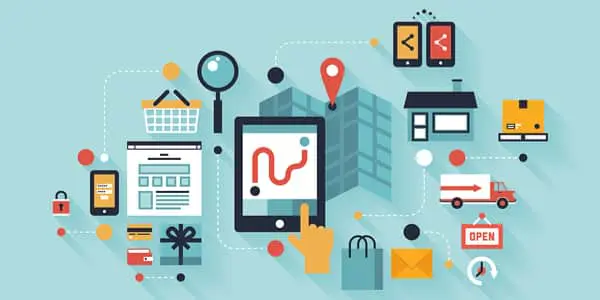It’s no secret that mobile technology moves faster than most. The first iPhone was released a little over ten years ago and the device is already on its seventh iteration. Android devices accelerated at a similar pace, leaving most consumers with a device in their hands that’s just as powerful as many desktop alternatives.
This rapid advancement has proved to be fuel on the already blazing fire of e-commerce. Online retail has surged in recent years and mobile commerce has played a big part in that rise. Purchases on smartphones and tablets accounted for 32% of all sales during the 2016 holiday period, valued at more than $24 billion.
That being said, pulling those orders in is just the first phase. Getting products picked, packed, shipped, and delivered in a timely manner is where the rubber meets the road — and where some retailers fail to make the grade.

How Mobile Commerce Impacts Order Fulfillment
The first thing to understand is that customers aren’t just using their smartphone to find a site and immediately place an order. In most cases – and for most product categories – the purchase warrants some degree of research and validation before buying.
This is important because every stage of the order process – including the interactions leading up to it and the physical delivery that follows – reflects on the brand. Even if all of the other pieces come together, a picking error or delayed delivery means some customers are unlikely to return.
Mobile orders often mean customers who are on the move and intolerant of delays, which makes the negative impact of failing the fulfillment test even worse.
This has several implications for any business trying to win more online orders (which should be almost everyone!) The shift to mobile commerce and online ordering brings the following key considerations for retailers:
- Make good use of the infrastructure you already have available. If customers like to place an order on their phone so that they can pick it up in-store, ensure that process is quick and frustration-free.
- Don’t spend all your time on fancy apps and mobile-friendly site ordering if you don’t have an efficient pick, pack, and ship solution in place for that channel. Make sure your employees and key service providers are on the same page before you roll out major changes designed specifically for mobile buyers.
- Identify distinctive traits of customers based on what they buy and how they order it. If your mobile commerce customers value speed above all else, build that into your training. If it’s precise tracking they need, make sure you have the software that will keep them in the loop.

What Happens Next?
If the example of e-commerce has taught us anything, it’s that mobile commerce is only going to become more popular.
Smartphones and tablets are everywhere, but certain parts of the retail sector are still rushing to fine-tune their responses to this explosive growth. That lag means that some companies are playing catch-up.
Brands must re-examine the distribution infrastructure available to them, with one eye on what exists today and the other on what will become crucial over the next few years.
As more and more companies identify the need to improve their mobile offering, we can expect greater competition in every sector. Existing companies will expand their ordering options to make them mobile-friendly, while new players enter the market with platforms that are immediately optimized for this new breed of customer.
Increasingly, mobile commerce will also drive improvements to inventory management. More customer data is available and much of it will flow through to suppliers and service providers.
Fulfillment teams will find that more information is accessible to them, which in turn should deliver improved order tracking for consumers. Analysis of this data could mean that companies can improve demand forecasts and make better decisions about how and where they allocate fulfillment resources.
Despite the current need to play catch-up, the long-term potential of mobile commerce is great for consumers and retailers alike. Brands that are able to align the promise of their order process with seamless shipping and delivery will find that mobile customers return often to enjoy the combination of convenience and service.
